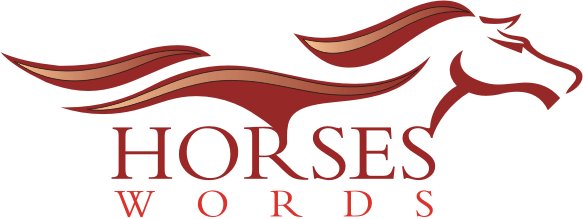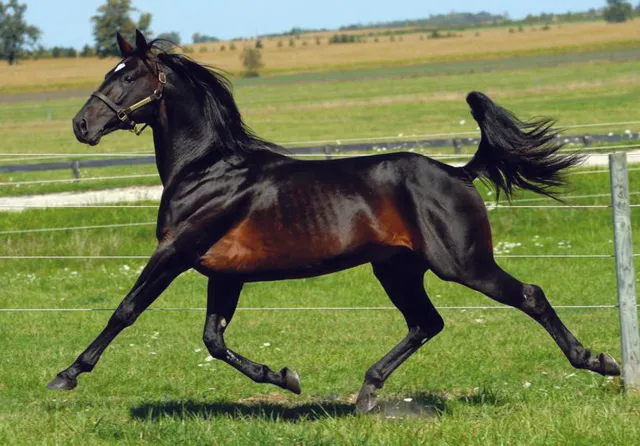Horse Teeth Age, Floating and Fossil Horse Teeth 2024
Horse teeth part of caring for your horse if I want to keep my horse in good health! So much of a horse’s age, dental health and even overall well-being can be deduced by examining their teeth.
There is so much to learn about these interesting properties, from floating horse teeth all the way down through ancient horses fossils.
The age of horse teeth has a direct impact on the food preferences, but it also affects training and performance.
The teeth are the history book of a horse, they truly give so much away on that horses past care… It fascinates me. Not to mention good dental care keeps my horse comfortable and happy with a great smile.
They can tell us about evolutionary transitions, and allow scientists to infer how horses dealt with changes over time.
I love getting a little more familiar with parts of equine health and history that I was less educated on. So, with that let us venture further into the wide ranging world of horse teeth….
Key Takeaways
- Proper Diet Health play an essential role in a horse’s well-being and feeding.
- Reallocating funds to regular dental care stops big pain and problems.
- Horse teeth help provide insight to the past.
Anatomy of Horse Teeth
Horse teeth are not the same as other animal species. They are extremely important to a horse for proper chewing and digesting of food. Knowing what the types and formation of their teeth are can help you take care of a horse’s dental health.
Structure of Horse Teeth
Fun Fact: Horse teeth are unique as they have a specific structure to them that allows beneficial for digesting the high grass and hay diet. They consist of various components such as,
ENAMEL: These hard outer layers protect the rest of tooth. It is the hardest substance in a horse.
Dentin: This lies just below the enamel and is less dense than cementum, providing some structural support to your tooth.
Pulp — the innermost part with nerves and blood vessels. Nourishes the tooth
Some Horse teeth continue to grow throughout life. Being worn by chewing action as they grind away. This prolonged expansion keeps them from cramping and maintains their pointy shape.
Types of Horse Teeth
The structure of the horse´s teeth Horses grow 6 kinds.
Incisors: 12 incisors in the top front Row. These teeth are used by horse nipping grass and forage in a pasture.
Canines : Found typically in males, there are four canines 11. These lie just behind the incisors and are used to tear food.
Horses have 12 premolars as well, which are also used to help grind and chew feed. They sit along the outside of their upper jaw, beside the canines and are used for grinding down tough grasses.
Molers — 12 molars in total these also help to breakdown food into smaller pieces. They are present in the mouth posteriorly
Wolf Teeth: These small teeth can be present, typically in front of the premolars.
Agey Enamel Wear Centers: The centres of the upper incisors in horses continue to wear as they age, becoming stars that form these aging rings around a tooth.
Horse Teeth Diagram
The teeth in a horse’s mouth are positioned very differently. The most common set of diagrams shows the dental arcade, i.e flowery line teeth structure.
Incisors: Located at the front for cutting.
Lateral and distal to incisors, Canines are less conspicuous in females.
Oddly enough premolars grind which is not what you would expect because they are next to canines but so it works out, say slightly larger teeth than incisors.
Molars: At the back; Bigger and help to grind food.
All types of teeth are useful for your mouth. With the location of every tooth type, these will help you in keeping a check on your dental health while letting you spot any troubles down.
All teeth wear correctly and remain healthy when checked on regularly by a vet.

Dental Care in Horses
Proper attention to dental health in horses is crucial for their general condition. The right care will help to avoid pain, weight loss and issues with behaviour.
Dental Issues in Horses
GOOD DENTAL HEALTH is not only vital to a horse’s overall well-being, it also can save physical ailments that result from poor dental care.
Pain and other health issues can also occur when horses have certain dental problems. The possibility to catch these problems early on is a step in precluding the healthiness of your dog.
Common Dental Problems
Some of the more common dental problems in horses include sharp points, wolf teeth and floating issues. Hair-like edges are created on the teeth and could be really uncomfortable.
While eating, these points can potentially damage the soft tissues in your horse’s mouth.
Wolf teeth are small teeth in front of the molars. They can rub against a horse’s bit and make riding painful or difficult.
This in turn can cause a horse to develop dental issues also such as uneven wearing and then poor chewing or even affects motility of the digestive system.
You should consult your dentist regularly in order to detect these problems early and prevent them from worsening.
Symptoms of Dental Pain
Signs of Hay with Dental Pain in Horses Typical signs are problems eating, dropping food or turning picky with feed.
It may also be a sign of irritation or resistance to saddle when being ridden.
Some horses may have a stinky from mouth odour which might be due the presence of dental infection or decay.
Problems as mentioned above can be recognized with the regular observation of any eating habits or behaviour.
Age of a Horse by its Teeth
I can tell a horse’s age by looking at his teeth. As horses grow their teeth also changes. What is also helpful or useful to me about this information, as I read over these forms right now one of the things that will tell me how long they are going to live and what their health maybe out in here.
Age-Related Changes in Teeth
Horse Teeth Change As They Age These modifications occur at different phases of life and are mirrored in their dental morphology.
The Front Milk (Deciduous) Teeth: Foals are born with a full set of deciduous, or milk teeth in the front. These normally develop around two weeks of age.
Adult Teeth: Between the age of three and four years old, horses begin to grow replacement adult teeth in place of their milk caps.
Galvayne’s Groove: A vertical groove that appears on the upper incisors around age 10 It lets me guess age by length.
Dental Wear Changes in Age: I look at how much the teeth are worn. Time wears out everything, and that means an older horse.
Reading teeth: When it comes to determining age of the body, one can use this.
When I assess the age of a horse, these are key markers that allow me to get an accurate read on how old it is. I sweat the quantity of dentine, their configuration and state.
Horses Incisors: There are six incisor teeth in both the upper and lower dental arcades. I check their wear patterns.
Molars: Molars can also show wear and tear that inhibits aging. Less wear on younger horses.
Dens in Dente: A dark spot that forms in the middle of a tooth as it matures. The appearance of it can also be a telltale sign for age.
With these techniques I am creditable enough to get an accurate idea of the age in horses. Each of these characteristics reveal the age of a horse.

Floating Horse Teeth
Floating Horse Teeth — a procedure where some filing or grinding of teeth is done in order to remove sharp edges This procedure is in place to save the horse from pain and to ensure that it can graze effectively.
Floating should occur every 6 to 12 months, depending on the horse’s age and dental health.
Normally the process is fairly simple and can be performed under sedation which keeps the horse calm. Well floating can vastly improve a horses Level of comfort for eating and life quality.
Ancient Equines and Dentition
The ancient equine had interesting dental features which provide information on their lifestyles and diets. Fossils of horse teeth provide crucial insights into how they evolved and their adaptations.
Fossil Horse Teeth
It is no surprise that fossil horse teeth do not resemble those of the modern equine. Because early horses, such as Hippotherium had small simple teeth that were adapted for soft leafy plants.
With bigger, more intricate teeth so that it could gnaw on offending plants just as the grasses did.
These teeth have a structure that reveals how our diet has changed over millions of years. For example you can see from the wear patterns that there was a switch towards munching harder grasses.
Fossilized teeth will give a clue of the horses age, diet and even what type environmental conditions were during the horse’s time.
These fossils provide valuable data for the study of ancient horse populations. Such data can provide clues to how climate and geography helped shape horse evolution.
Fossil horse teeth provide the means to tell the history of these animals, which is important for discerning their Mountain and Basin identity.
Cultural Impact
Horse teeth have made their mark on the other elements of a culture, such as art and language. Throughout this term these references often refer to the part of horses in society and their teeth are largely unique.
Horse Teeth in Pop Culture
It is sometimes depicted in art, literature or the media. Strength, health and beauty. Even in great paintings and sculptures from the past, we have clear reminders of horses showing their teeth as a testimony to their civilizing influences on humans.
Cartoons and animations often depict horse teeth — in a comical manner, of course. This creates evocative images that can turn into well-defined characters touching audiences.
Additionally, using horse teeth in marketing items related to horses (e.g. equine health supplements and dental care products) is common practice too.
This again is showing their significance in the equine industry.
Horse Teeth Symbolism and Mythology
Different cultures have imported various meanings to horse teeth. In many myths, horses embody freedom and strength. Their teeth can represent power, and the ability to get through hard times.
In historical folklore, horse teeth have magical characteristics. Horse teeth were often kept as good luck charms or for protection in certain traditions.
So, these thoughts of horse and its characteristics being this much valuable also explains their importance in past.
Horse teeth can also be symbolisms of beauty and grace that mostly depicted on the art.
The horse thus functions as the vital link between our world and those of antiquity, forever embodying steadfast service at man’s side.
RELATED: CBD for Horses’ Health Behaviour






